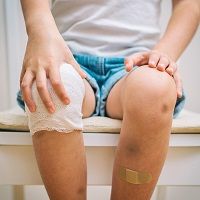Electrochemical Scaffold Eliminates Need for Biofilms, Antibiotics
Researchers have established a novel foundation for an alternative antibiotic-free wound dressing to eliminate biofilms. The team has, for the first time, discovered how electrical stimulation can treat bacterial infections, offering a viable alternative to medicinal antibiotics.

Washington State University researchers suggest that they have established a novel foundation for an alternative antibiotic-free wound dressing to eliminate biofilms. The team has, for the first time, discovered how electrical stimulation can treat bacterial infections, offering a viable alternative to medicinal antibiotics.
Although research has assessed the treatment of infected wounds with electrical stimulation for more than 100 years, study results have been mixed, and antibiotics have remained the preferred and most effective treatment for infections. However, widespread antibiotic use has led to drug-resistant strains of infections. In fact, the CDC estimates that at least 2 million infections and 23,000 deaths are attributable to antibiotic-resistant bacteria in the Unites States annually.
Whereas electrical stimulation has been shown in prior research to also produce mixed results against bacteria, co-author Haluk Beyenal, PhD, a professor in the Gene and Linda Voiland School of Chemical Engineering and Bioengineering at Washington State University, said this is likely due in part to the authors of this prior research not having a clear understanding of how this stimulation works electrochemically. “Many people tried this simple method,” said Beyenal. “Sometimes it worked, and sometimes it didn’t. We controlled the electrochemical reactions. That’s the reason it works.”
Published in the open-access online journal Nature Scientific Reports, the study tested the hypothesis that “low concentrations of [hydrogen peroxide (H2O2)] could be generated through the electrochemical conversion of oxygen by applying an electric potential to a conductive scaffold and produce a low, but constant, concentration of H2O2 that would be sufficient to destroy biofilms,” wrote the authors.
For the study, Beyenal and colleagues used a multidrug-resistant Acinetobacter baumannii strain, which is often a culprit in difficult-to-treat biofilm infections. Conductive carbon fabrics were used as the scaffold material in order to make an “e-scaffold.” In vitro experiments showed a maximum constant H2O2 concentration of about 25 μM near the surface of the e-scaffold. When the e-scaffold was overlaid on an existing Acinetobacter baumannii biofilm, an approximately 4-log reduction was observed in viable bacteria within 24 hours, with an approximately 80% decrease in biofilm surface coverage.
When a similar procedure was used to overlay the e-scaffold ono an existing Acinetobacter baumannii biofilm grown on a porcine explant, an approximately 3-log reduction in viable bacteria from the infected explant was seen after 24 hours, with no observable damage to the underlying mammalian tissue.
“We have been doing fundamental research on this for many years, and finally, we are able to transfer it to technology,” said Beyenal. “It’s really exciting.”